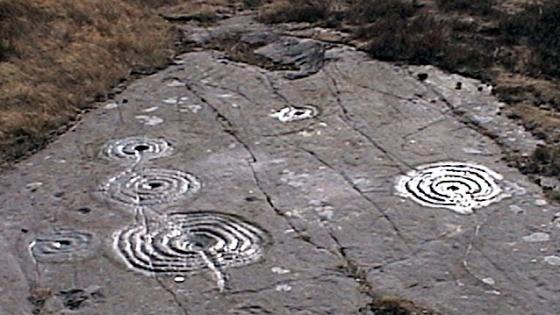



Smaller platform viewed from the west, approach “ramp” to the left and ditch between the smaller platform and the main platform visible on the skyline right of centre.

Looking up towards the main platform from the south west.
Visited on a still, sunny day this site was a real pleasure. Being in a low land setting it lacks the scenic views of the grander sites in Northumberland but is still well worth a visit.
Access is relatively easy, park at the cross roads west of Doxford Hall and walk west to reach the public right of way going South from the lane. The official access point is through the garden of the cottage but the owner has put up signs warning of large dogs. I didn’t see any but decided that I’d re-route rather than take the chance. Walk about 50m up the lane and there is a break in the hedge with a low wire fence (no barbed wire on top) that provides easy access. Head roughly south across the first field to the fence ahead. Follow the boundary of the field ahead (stay on the right of the fence) passing the site on your left. At the end of the field there is a gate on the left providing easy access to the south end of the site. The site is used for grazing sheep so best avoided during lambing.
The site looks like a defended settlement rather than a “fort” of any kind. The defensive banks are strong on the stream sides but far weaker on the remaining sides. A naturally raised location close to running water and good farmland being the obvious features of the site.
The main raised area to the south and is a rough ellipse of 75m by 50m with a central raised area within (planted with trees and easy to see on Google Earth). The ground in the main raised area is flat but very uneven and there could be a number of features buried here.
To the north east and separated by a ditch is a smaller (and slightly lower) raised platform (again with trees at the highest point). This smaller platform is very interesting. It’s not obvious from the ground but looking at images from Google Earth, and in particular Microsoft VE this looks like part of a ramped entry from the north east, with a long sloping ramp leading to the smaller platform and then the ditch before accessing the main platform.
The whole site appears to have had some later ridge and furrow ploughing over the flatter areas but there are terraces on the east side that could be original.
The nearby lake is a Victorian garden landscape addition and doesn’t appear on maps earlier than 1900. Looking at earlier maps the construction of the lake could have removed some of the first parts of the ramp in the far north east.
The site could well be linked to others by the stream that passes to the south of the site. Dunstan Hill is the first obvious raised area before the stream joins Brunton Burn and meets the North Sea about 4 miles away. There is another settlement on raised ground 1.5m upstream near North Charlton and around 2.5 downstream there is crop mark evidence of ring ditches on Embleton Moor near Brunton.
Heritage Lottery Funded project which unlocks the archaeological secrets of County Durham and Northumberland. This website provides access to a complete record of the archaeology of the two counties, from the smallest prehistoric flint to the largest medieval castle.








































































































